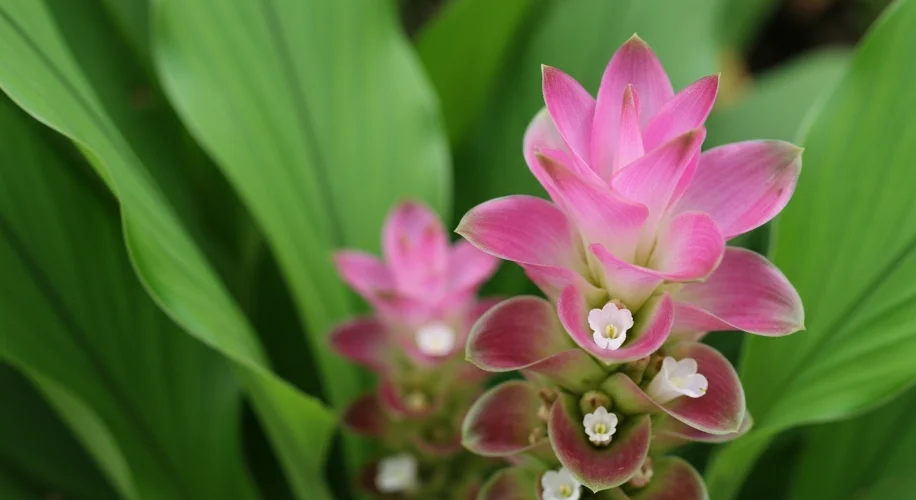As gardeners, we often focus on the roots when we think of turmeric. That earthy, golden rhizome is what most of us grow it for, right? But have you ever stopped to admire the bloom itself? I was a bit surprised the first time I saw a turmeric flower emerge in my garden, and it got me thinking about the whole journey from a simple patch of soil to our plates, with a beautiful floral interlude.
Turmeric (Curcuma longa) is a member of the ginger family, and its flowers are quite unique. They typically appear on tall stalks, rising from the center of the plant. The flower spikes are often cone-shaped, with bracts that are usually a vibrant pink or red, hiding the smaller, more delicate white or yellow true flowers within. It’s a slow reveal, a layered beauty that’s different from the more flamboyant blossoms we often associate with summer gardens.
I started growing turmeric a few years ago, mostly out of curiosity and a desire to have fresh turmeric on hand. It’s not a difficult plant to cultivate, especially if you’re in a warmer climate or can provide it with the right conditions. Turmeric loves warmth, humidity, and well-draining soil. I grow mine in raised beds here in the Midwest, giving them a good start in the spring and often overwintering some rhizomes indoors.
The real magic for me is seeing those flower stalks emerge. They’re a sign that the plant is not only surviving but thriving. It’s a visual confirmation of the energy that’s gone into developing those precious rhizomes underground. While the flowers themselves aren’t typically used in cooking, their presence signals a healthy, mature plant ready for harvest later in the season.
When it’s time to harvest (usually in the fall, after the leaves start to die back), you carefully dig up the rhizomes. After cleaning them, you can dry them and grind them into the vibrant powder we all know and love. But before that happens, there’s that brief, beautiful period where the plant proudly displays its flowers. It’s a reminder that even the most utilitarian plants have an aesthetic side.
It’s this whole cycle that I find so fascinating – from the initial planting of a rhizome, to nurturing the leafy green stalks, admiring the unexpected floral display, and finally, to harvesting the root that brings so much color and flavor to our kitchens. Turmeric flowers are a quiet beauty, a testament to the plant’s life cycle and a lovely bonus for any gardener.
So, next time you plant turmeric, keep an eye out for those blooms. They’re a pretty special part of the process, connecting the garden patch directly to the plate with a touch of natural artistry.

